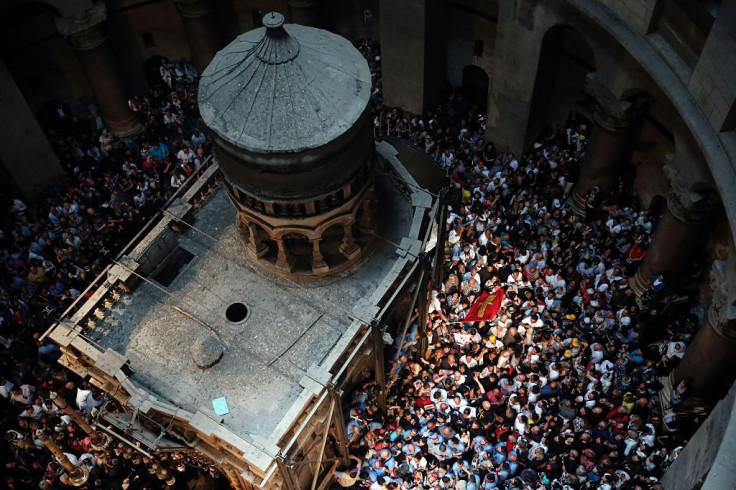Tomb Of Jesus Christ Revealed For First Time In Centuries: Pictures Of Massive Conservation Project In Jerusalem

A team of researchers revealed that the site where Jesus Christ is believed to have been buried has remained largely intact after exposing it for the first time in centuries, National Geographic reported Monday.
The site is located in the Church of the Holy Sepulchre, the holiest site in the Christian faith. While the surrounding church receives around 4 million visitors a year, the tomb itself has been covered in a protective marble cladding since at least 1555 and likely even centuries before. Scientists removed this layer Wednesday, exposing another marble slab adorned with a cross. Hours before the tomb was to be resealed, the team discovered what they believe to be Jesus' original burial bed.

"I'm absolutely amazed. My knees are shaking a little bit because I wasn't expecting this,” said Fredrik Hiebert, National Geographic's archaeologist-in-residence told the publication.
"We can't say 100 percent, but it appears to be visible proof that the location of the tomb has not shifted through time, something that scientists and historians have wondered for decades," he added.
The team's instruments had not initially detected a layer of debris under the marble cover. The bed is surrounded by an 18th century shrine, known as the Edicule or "the little house" in Latin. A small window cut into the sides of the shrine also revealed that the original limestone cave walls had also survived. The entire structure is undergoing restoration for the first time in centuries thanks to major donors such as Jordan's King Abdullah II and Romanian-born designer Micah Ertegun. Experts from the National Technical University of Athens are undertaking the over $4 million project, which was commissioned by Greek Orthodox Patriarchate of Jerusalem.
According to Christian tradition, Jesus Christ was layed upon this burial bed after his crucifixion at the hands of the Romans approximately 30 A.D. Followers believe that he was resurrected three days after his death and that he left his tomb to continue to preach before ascending into heaven body and soul.
Restoration team peels away the innermost layer of what is revered as Jesus' tomb for first time in centuries. https://t.co/i5TWGq3seI
— The Associated Press (@AP) October 27, 2016
Take a look at what researchers found while examining the holiest site in Christianity https://t.co/AyDmxAHx9t
— National Geographic (@NatGeo) October 31, 2016
© Copyright IBTimes 2025. All rights reserved.





















